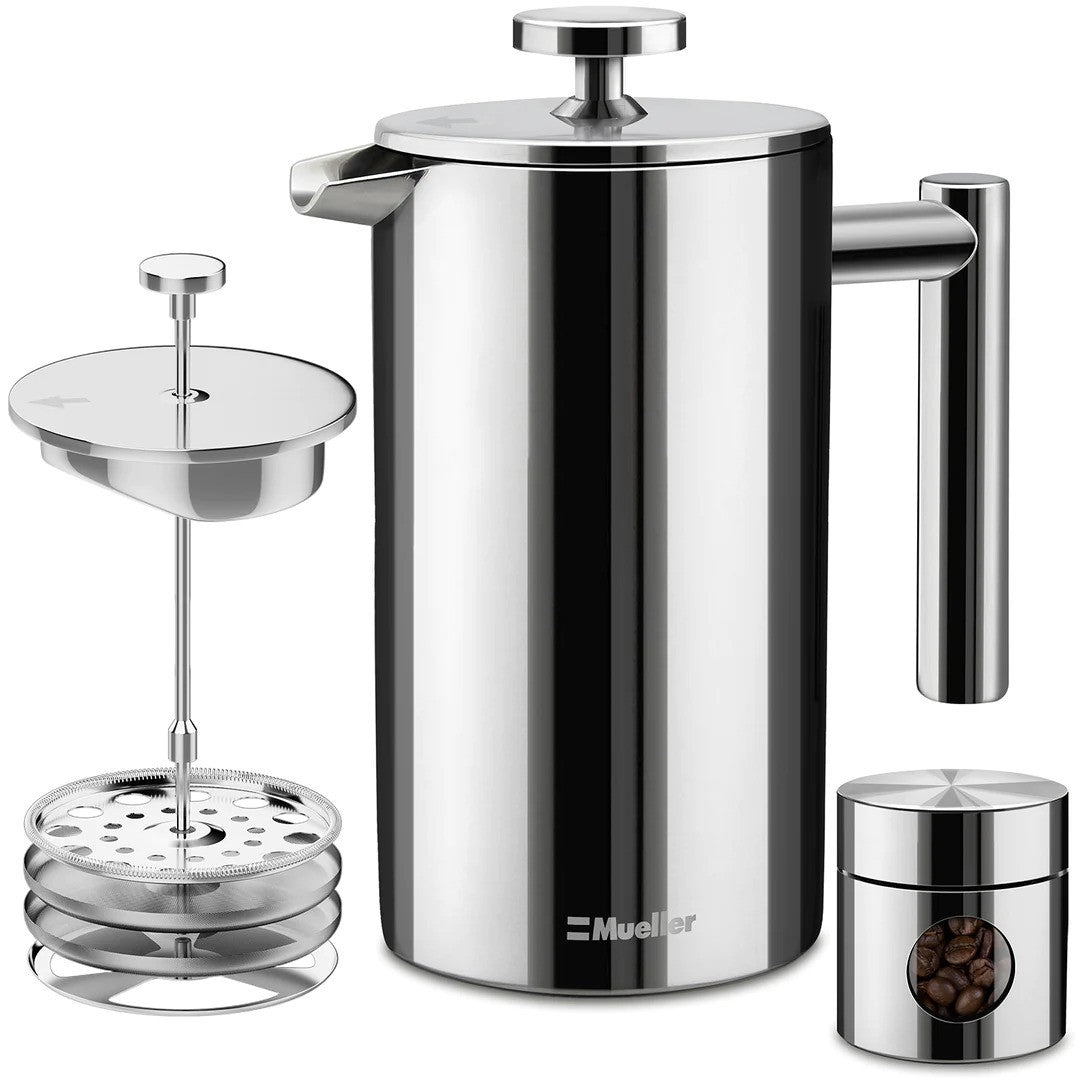AeroPress - an Ugly Way to Brew Coffee by Karen Paterson
Imagine a romantic dinner followed by a spectacular cup of coffee brewed right at your table. The waiter brings a siphon brewer – how interesting; or a french press – how elegant; or a pour over filter – how special; or an AeroPress – how ???. There is nothing elegant about an AeroPress. The AeroPress was created by a toy company which may explain its lack of elegance.
I have always resisted using one and have thought that if I had company I would use it in the garage when no one was looking. That said, the AeroPress is popular and there is a place for it (other than an elegant dinner table.)
The AeroPress works like a hypodermic syringe. You fill the tube with ground coffee and hot water and then push the plunger to force the coffee through a filter (instead of a needle.)
The pro’s:
- inexpensive about $25.
- hard to break
- quick brewing
- easy to clean
- compact for travel
- convenient for office or for one cup
The con’s:
- strange instructions
- useless graphics on the brew cylinder
- hard to press down
- requires sturdy coffee cup under plunger
There seems to be a consensus among coffee processionals that the instructions in the AeroPress box are wrong. Here are some of the issues:
Upside Down Brewing The instructions say to put the filter on, add the grounds and then the water. If you do that some of the liquid will leak through the filter before brewing is complete. The geek answer is to put the plunger in, turn the brew chamber upside down, add coffee grounds, add water, brew, put on the filter and flip the AeroPress onto a cup. I am not sure for most of us the small amount of leak really makes a difference.
Temperature The instructions say to use water between 165° F and 170° F. I have a Mr. Coffee that brews at that temperature and it tastes awful. Most of the geek instructions say brew at 200° F. We recommend that you use 200° F. However, some reviewers report that over time pouring 200° F+ water into the brew cylinder will result in the plastic cracking and deforming.
Extraction Time The instructions call for a 10 second extraction time. This is a long way from the 4 minute extraction in the siphon, french press or pour over. We recommend at least a 2 minute steep time.
Add Water If you follow the instructions you create a coffee concentrate. AeroPress states that this is espresso coffee. It is not. It is just coffee concentrate. The instructions say to add hot water to the concentrate to create a brewed coffee. Most geeks put all of the water into the cylinder instead of adding water to the concentrate. We recommend this, however, you are only going to get about a 6 ounce cup of coffee.
There are dozens of alternative instructions for AeroPress coffee on the internet and videos on YouTube. It is OK to create your own recipe since there does not appear to be any “one right recipe.” Our brew method for an AeroPress cup of coffee is:
1. Put filter on bottom of cylinder
2. Put cylinder on sturdy cup
3. Wet filter Pour out excess water.
4. Grind two tablespoons of coffee slightly finer than drip
5. Add grounds to cylinder
6. Pour 200° F water into cylinder to top of grounds
7. After 30 seconds, add more 200° F water to top of cylinder and stir (water will leak through filter which will give you room for the plunger)
8. After another minute and a half, put in plunger and press slowly
Our opinion is that AeroPress coffee is better than automatic drip brewed coffee, but not as good as a well made siphon, french press or pour over cup of coffee. We think that the short extraction time leaves some of the subtle flavors behind. But if you just want a quick cup of coffee without a lot of work or mess, it is an excellent choice.
Karen Jue Paterson is the owner of Hula Daddy Kona Coffee, a 33 acre coffee farm in Kona, Hawaii. She is a member of the Hawaii Coffee Association, the Kona Coffee Council, the Kona Coffee Farmers Association, the Holualoa Village Association and the Specialty Coffee Association of America. She is also the author of a number of articles on Kona Coffee including: Kona Coffee Farmers at a Crossroad https://www.huladaddy.com/?p=696 ;How Typica is Your Kona Coffee? https://www.huladaddy.com/?p=710 ; Are Roasters Eroding the Kona Coffee Brand?https://www.huladaddy.com/?p=952; Coffee Cupping Competitions – Real or Random Chance? https://www.huladaddy.com/?p=1670 ; Seven Easy Steps to Become a Gourmet Coffee Taster https://www.huladaddy.com/?p=1785 ; How to Brew Coffee Using a Pour Over Filter https://www.huladaddy.com/?p=1754; Before You Buy an Automatic Single Serve Coffee Brewer https://www.huladaddy.com/?p=1899 You can email her at huladaddycoffee@gmail.com

